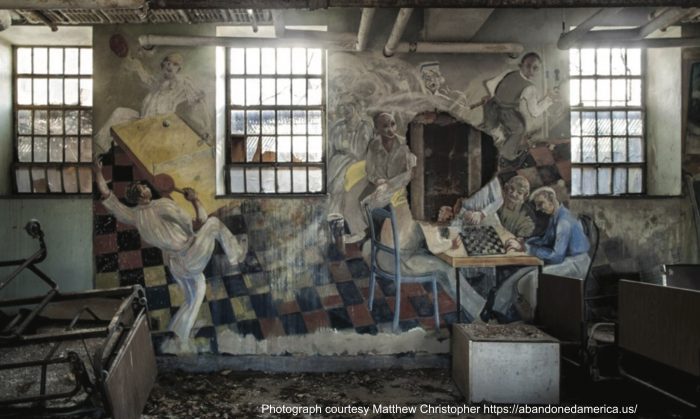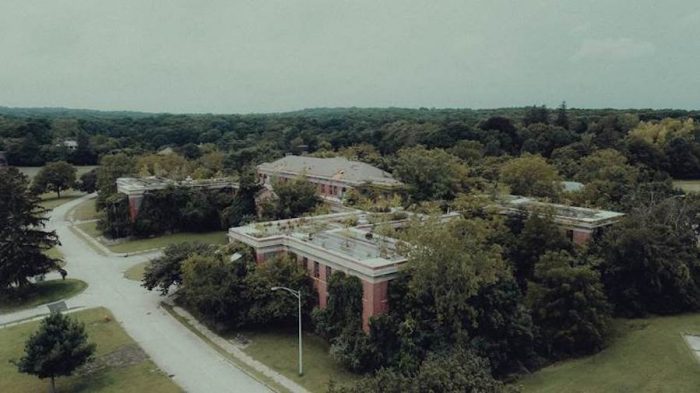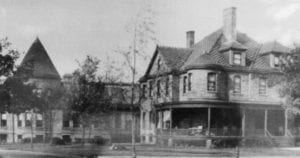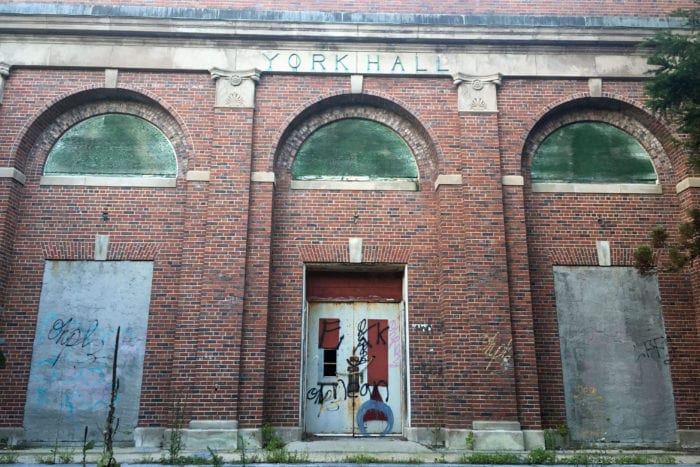Properties in Brentwood, Huntington, Kings Park, North Hempstead, Oyster Bay, Riverhead, and Smithtown are included in Preservation Long Island’s biennial list of Endangered Historic Places.
Preservation Long Island’s 2023 Endangered Historic Places List features seven nominated sites that span Long Island from a lighthouse on the Sound off Kings Point, to an early power plant in Riverhead. From historic homesteads to an expansive former mental health campus, the latest list highlights the historical richness of the region.
The Preservation Long Island (PLI) Endangered Historic Places Program (EHPP) is designed to identify, highlight, and address the imminent threats faced by significant historical sites and structures across Long Island. Properties are nominated to the list by concerned citizens and groups on Long Island. The program aims to raise public awareness about the endangered status of these historical places. PLI engages in advocacy efforts to garner support from the local community and beyond, emphasizing the importance of preserving these sites for future generations.
“The program offers Long Islanders an opportunity to advocate for preservation in their communities while learning how to use tools like landmark designation, tax incentives, and public outreach,” said Alexandra Wolfe, Preservation Long Island’s Executive Director. “Our program partners receive priority technical assistance from our professional staff and their listings are featured on our website and social media.”
“Operating on two levels, the program seeks to educate and mobilize new preservation advocates while identifying endangered historic places,” said Tara Cubie, Preservation Long Island’s Director of Preservation and Advocacy. “The relationships fostered by becoming an EHPP listing site are long term. The goal is for communities to develop sustainable comprehensive strategies for the protection and preservation of their historic resources.”
A panel of Preservation Long Island staff and trustees, as well as experts in architecture, historic preservation, and other related fields selected the properties based on three key criteria: overall historic significance, severity of the threat and impact the EHPP listing will have on efforts to protect the nominated site.
In-person events are planned for the Spring of 2024 that include site tours, and panel discussions open to the public. Visit the EHPP page on our website to learn more about each of the selected sites and browse the schedule of upcoming events.
Preservation Long Island invites all Long Islanders to join us in celebrating and supporting the important sites on Long Island’s List of Endangered Historic Places for 2023:
Eliphalet Whitman House (c. 1736), Jericho Turnpike, Smithtown (part of Caleb Smith State Park). Listed on the National Register as a contributing structure to the Wyandanch Club Historic District, the house does not appear to be maintained and is showing significant signs of neglect and deterioration.
Perkins Electric Generating Plant (Riverhead Electric Co), West Main Street, Riverhead. Constructed in 1897, it was one of the earliest electric plants on Long Island. The building is vacant and deteriorating.
Steppingstone Lighthouse, Long Island Sound, off Kings Point and South of City Island (owned by Town of North Hempstead). Completed in 1877, it is one of the last offshore lighthouses in the Upper Mid-Atlantic to be built of brick and stone. The site is threatened by deterioration and neglect.
King’s Park Psychiatric Center, Nissequogue River State Park, Kings Park. A former mental health facility established in 1884, with the oldest extant buildings dating from 1890, the complex is significant for its architecture and as a cultural historic landscape. The Master Plan for the park finalized in August 2023, proposes demolition of Kings Park Boulevard.
Coindre Hall Boathouse, Town of Huntington. Located directly behind Coindre Hall (c.1912), the boat house is a miniature replica of the mansion. No longer safe for use, the structure has been fenced in for safety purposes, and is in bad condition. Although there has been stabilization work completed, there is debate regarding whether the building should be restored or the waterfront should be turned into a nature reserve.
Shutt House, Town of Islip. The house is one of the original homes in Modern Times (1851-1864), Long Island’s utopian community (which evolved into today’s Brentwood). The structure is threatened by proposed demolition and development by the current owner.
Mill Pond House, Town of Oyster Bay. Built before 1720, the Mill Pond House is one of the oldest surviving dwellings in Oyster Bay. The building has been vacant since 2008 and continues to deteriorate.
Preservation Long Island’s Endangered Historic Places Program is made possible in part by a grant from the New York State Council on the Arts with the support of Governor Kathy Hochul and the New York State Legislature.
About Preservation Long Island
Preservation Long Island is a not-for-profit organization that works with Long Islanders to raise awareness, appreciation, and support for the protection of our shared past through advocacy, education, and the stewardship of historic sites and collections.
Preservation Long Island’s preservation advocacy services support the work of our local partners in communities across the region. We offer consultation and strategic guidance for Long Islanders seeking help with local preservation projects, including historic resource surveys, local landmark designation, National Register listing, and restoration or adaptive reuse of historic buildings.
Preservation Long Island also maintains and interprets historic sites and collections that embody various aspects of Long Island’s history including:
Joseph Lloyd Manor, Lloyd Harbor
Custom House, Sag Harbor
Sherwood-Jayne Farm, Setauket
Old Methodist Church and Exhibition Gallery





 The Kings Park facility even had what they called York Hall, where patients would watch movies, play basketball, perform shows and attend functions. The facility also had its own water tower, railroad station, space for masonry work, independent fire and police force and the Veterans Memorial Hospital, which was a group of 17 buildings used to treat veterans that came home from World War I with mental conditions.
The Kings Park facility even had what they called York Hall, where patients would watch movies, play basketball, perform shows and attend functions. The facility also had its own water tower, railroad station, space for masonry work, independent fire and police force and the Veterans Memorial Hospital, which was a group of 17 buildings used to treat veterans that came home from World War I with mental conditions.



